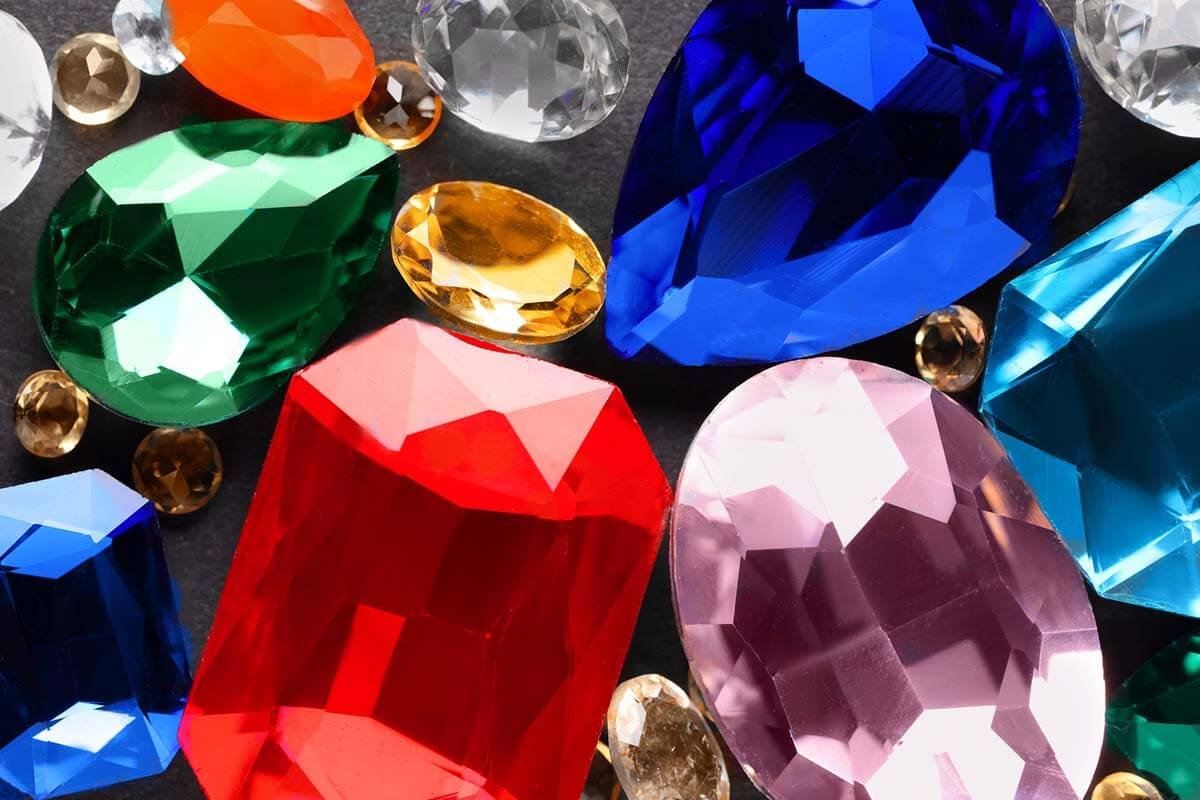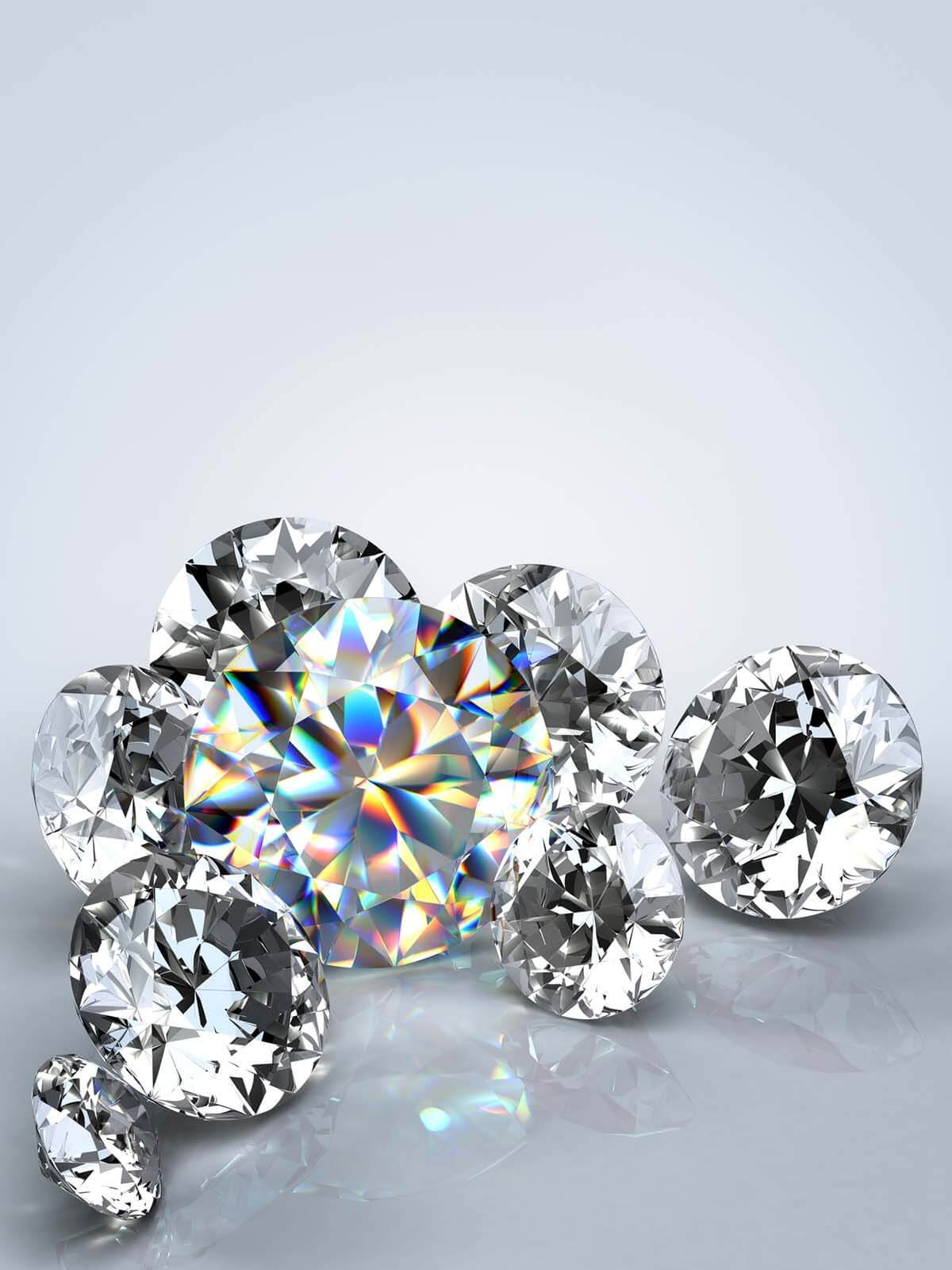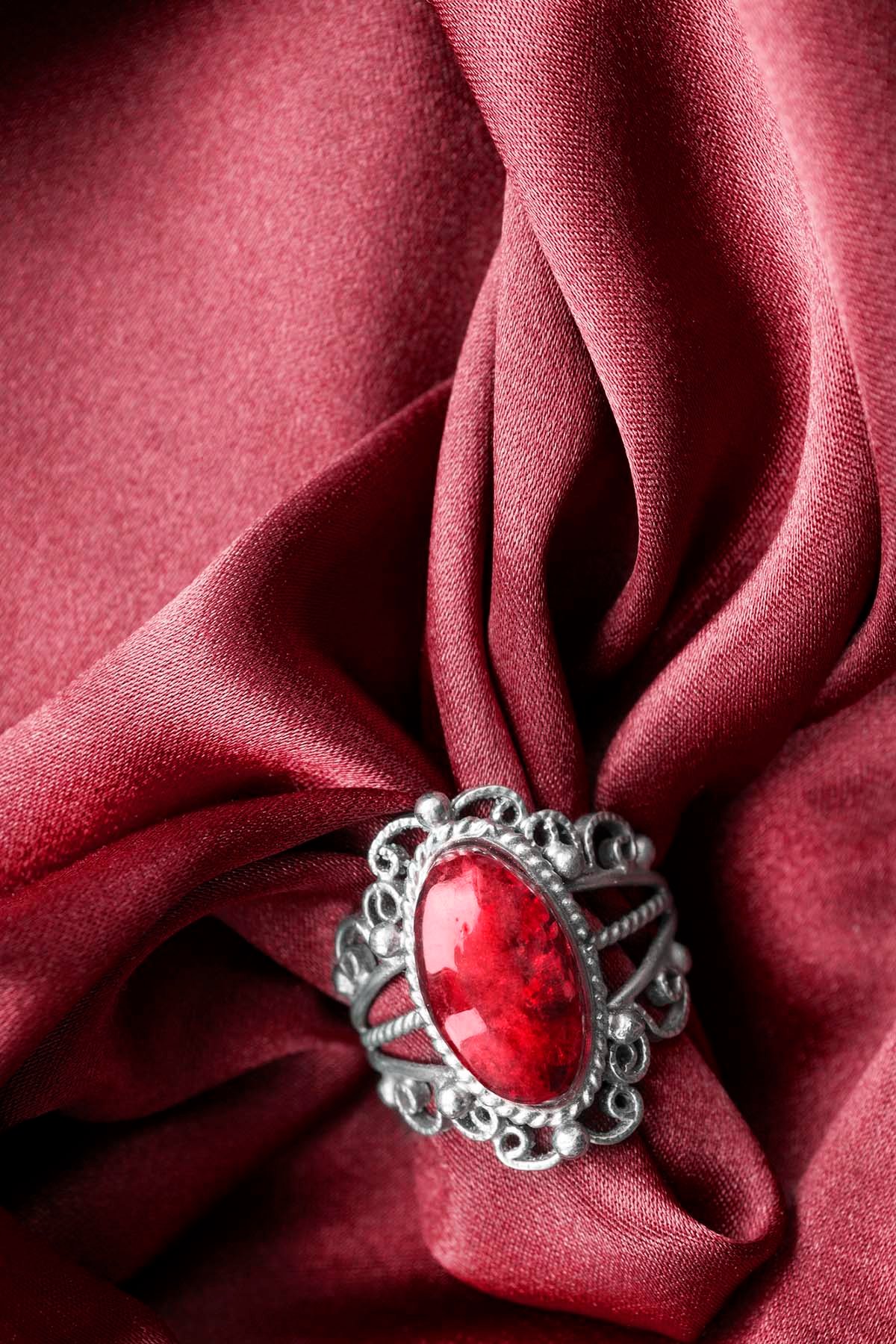Gemstones have adorned human history for centuries, captivating hearts with their dazzling beauty. Shiny and stunning, who doesn’t love them?! I love gemstones in all colors, but have you ever thought about their meaning?
Beyond their aesthetic appeal, these precious stones carry profound symbolic meanings deeply embedded in cultural traditions and beliefs. In this article, I dive into the rich tapestry of gemstone meanings, unraveling the secrets behind 17 of the most popular gemstones and a list of birthstones for each month of the year.
Historical Significance: Beyond Ornamentation

Throughout history, gemstones have held a significant place in various civilizations, serving purposes beyond mere ornamentation. Ancient cultures attributed spiritual and healing properties to different gemstones, believing in their ability to influence one’s well-being and destiny.
Symbolic Meanings of Popular Gemstones

Diamonds: Known as the “king of gemstones,” diamonds symbolize strength, endurance, and everlasting love. They have been prized for centuries as a representation of purity and commitment in relationships.
Rubies: The fiery red hue of rubies symbolizes passion, vitality, and courage. In many cultures, rubies are associated with love and protection, making them a popular choice for engagement rings.
Emeralds: Green with lush vitality, emeralds represent rebirth, growth, and harmony. They are often linked to fertility and are considered a symbol of eternal youth
Sapphires: Blue sapphires symbolize wisdom, loyalty, and nobility. They have been cherished as symbols of protection, guiding wearers through challenges and fostering spiritual enlightenment.
Amethyst: A purple variety of quartz, amethyst is associated with calmness and clarity of mind. It’s often used for spiritual and healing purposes.
Aquamarine: With its soothing blue color, aquamarine is associated with the calming energies of the sea and is believed to bring tranquility.
Topaz: Available in various colors, topaz is often associated with strength and intellect. Blue topaz is particularly popular.
Opal: Known for its iridescence and play of colors, opal is associated with inspiration, imagination, and creativity.
Turquoise: A blue to greenish-blue stone, turquoise is believed to bring good fortune and is often associated with protection and healing.
Citrine: A golden-yellow variety of quartz, citrine is associated with positivity, prosperity, and success.
Garnet: Available in a range of colors, garnet is often associated with passion, energy, and health.
Clear Quartz: A versatile and abundant mineral known as a master healer. It is believed to amplify energy and promote clarity, balance, and harmony. Clear Quartz is highly valued for its ability to enhance spiritual growth and is often associated with cleansing and purifying properties.
Peridot: A vibrant green gemstone, peridot is associated with positive energy, good health, and prosperity.
Moonstone: Known for its ethereal sheen and glow, moonstone is often associated with intuition, balance, and new beginnings.
Rose Quartz: This pale pink variety of quartz is often associated with love, compassion, and emotional healing. Rose quartz is considered the stone of unconditional love and is believed to open the heart to all forms of love, including self-love.
Tourmaline: Available in a variety of colors, tourmaline is known for its energy-cleansing and balancing properties.
Jade: Considered a symbol of purity and serenity, jade is often associated with good luck, prosperity, and longevity.
Cultural Variations: Diverse Interpretations Across Societies

The symbolic meanings of gemstones can vary widely across different cultures and belief systems. For example, while Western cultures associate pearls with purity and innocence, in many Eastern cultures, they symbolize wisdom acquired through experience.
Similarly, the mystical allure of amethyst is interpreted differently in ancient Greek and Egyptian traditions. Greeks believed that wearing amethyst could prevent intoxication, while Egyptians associated it with protection against harm.
List of Birthstones
The concept of birthstones adds a personal touch to gemstone meanings. Each month is linked to a specific gemstone, believed to bring good luck, protection, and unique qualities to individuals born during that time. Exploring the meaning behind your birthstone can deepen your connection to both the stone and its historical significance.
Here’s a list of what is the birthstone of each month of the year:
- January: Garnet
- February: Amethyst
- March: Aquamarine
- April: Diamond
- May: Emerald
- June: Pearl (alternatively, Moonstone or Alexandrite)
- July: Ruby
- August: Peridot
- September: Sapphire
- October: Tourmaline (alternatively, Opal)
- November: Topaz (alternatively, Citrine)
- December: Blue Topaz
Practical Tips for Choosing Gemstones

Selecting gemstones based on their meanings can be a delightful and personal experience. Consider your values, aspirations, and goals when choosing gemstones for yourself or others. Combining stones with complementary meanings can create a harmonious and powerful energy in your jewelry.
Conclusion: Unveiling the Mysteries Within Gemstones

In conclusion, gemstone meanings open a doorway to a world of symbolism, history, and cultural richness. Beyond their sparkling surfaces, gemstones carry tales of love, protection, and personal growth. Whether you’re drawn to the timeless elegance of diamonds or the vibrant hues of sapphires, take a moment to unravel the secrets behind your favorite stones, and let their meanings enhance the beauty they bring to your life.
As you explore the world of gemstone meanings, may you find not just jewelry but a story waiting to be told—one that intertwines with your journey and adds a touch of magic to the precious stones you hold dear.






